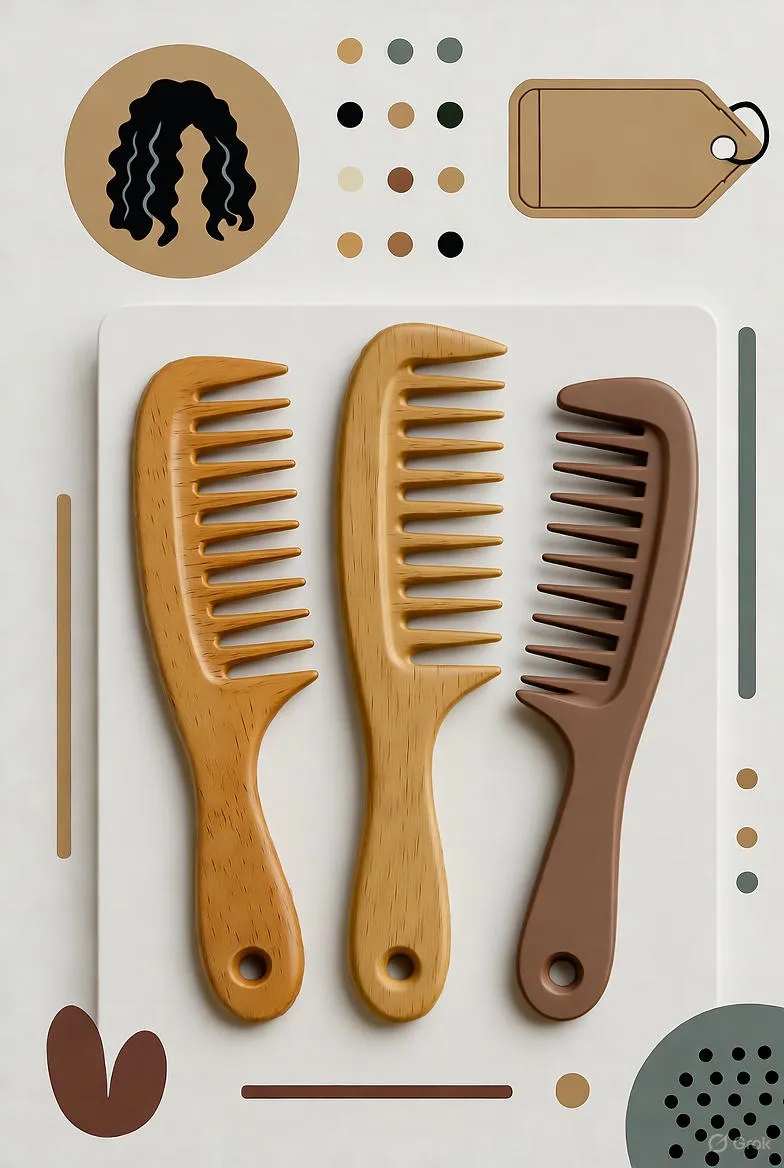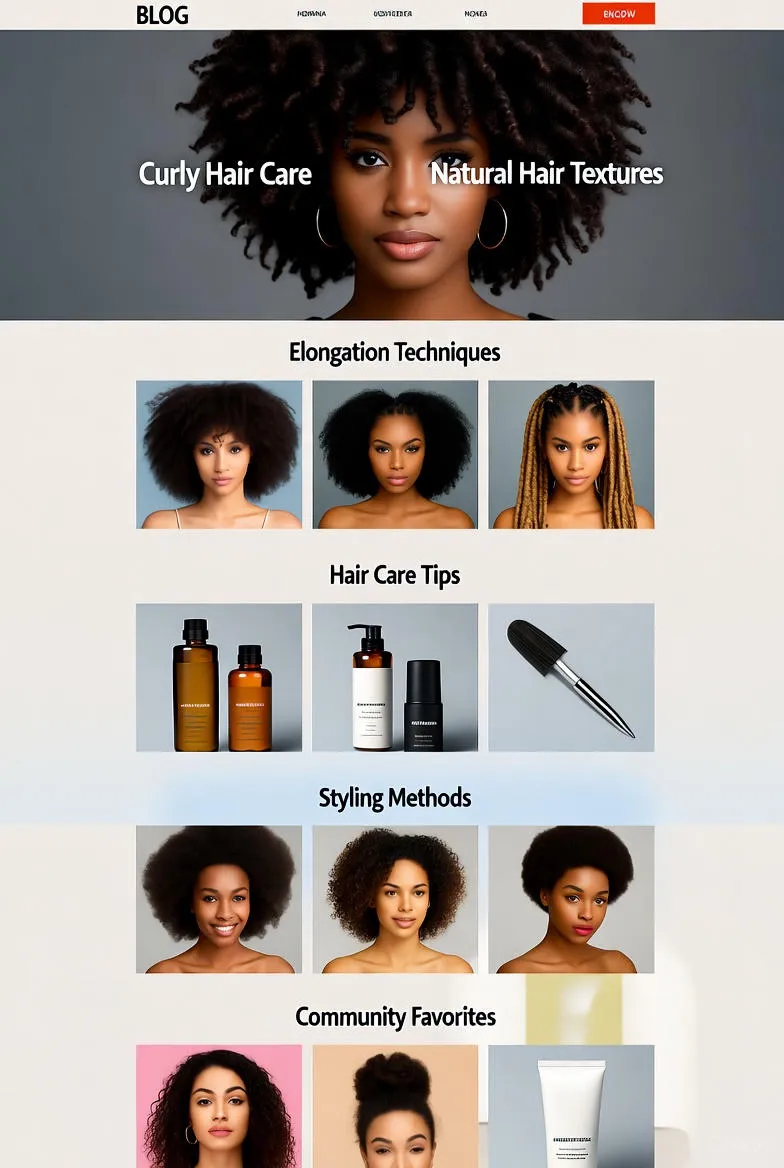How to Detangle Curls Safely: A Complete Guide for Healthy, Beautiful Hair
Learn how to detangle curly hair safely and effectively. Discover the best tools, techniques, and products to prevent breakage, reduce frizz, and keep your curls healthy and defined.

Curly hair is a unique expression of texture, beauty, and individuality. But with all its charm comes a set of special challenges—one of the most common being tangled curls. Detangling curly hair can be a delicate process that requires patience, technique, and the right products. Done incorrectly, it can lead to breakage, frizz, and loss of definition. Done properly, however, it helps maintain the health and shape of your curls, keeping them vibrant and strong. In this guide, we’ll explore how to detangle curls safely, step by step.
Why Detangling Is So Important
Detangling isn’t just about aesthetics—it’s an essential part of maintaining hair health. Curly strands tend to wrap around each other, forming knots and tangles, especially after washing or sleeping. If not managed properly, these tangles can cause:
- Breakage: Roughly pulling through tangles can snap delicate strands.
- Frizz: Improper detangling disrupts curl patterns and creates flyaways.
- Split Ends: Damaged ends make detangling even harder in the future.
- Loss of Definition: Over-manipulating curls can loosen their natural structure.
By learning to detangle with care, you not only protect your curls but also encourage healthy growth and longevity.
Step 1: Choose the Right Tools
The tools you use can make or break your detangling routine. Avoid fine-tooth combs or brushes with harsh bristles, as they can cause damage. Instead, opt for:
- Wide-Tooth Comb: Perfect for gently separating curls without pulling.
- Finger Detangling: The most gentle method—your fingers can feel knots and ease them apart naturally.
- Detangling Brush: Designed specifically for textured or curly hair, these brushes minimize breakage.
Step 2: Always Detangle on Wet or Damp Hair
Never try to detangle dry curls—it’s one of the fastest ways to cause breakage. Curls are more elastic and flexible when wet, making them easier to manage. You can detangle in two main ways:
- In the Shower: Apply conditioner or a detangling mask to dripping wet hair, then gently work through sections with your fingers or a comb.
- On Damp Hair: Use a leave-in conditioner or detangling spray on towel-dried hair to provide slip and moisture.
Step 3: Use Plenty of Slip
Slip refers to how easily a product helps strands glide past each other. The more slip, the less friction and breakage. Look for products with ingredients like:
- Aloe Vera – hydrates and smooths the hair cuticle.
- Coconut Oil – softens curls and adds shine.
- Shea Butter – rich in fatty acids that nourish and detangle.
- Silicones (optional) – can provide temporary slip for easier combing.
Step 4: Work in Small Sections
Detangling curly hair is a process of patience. Divide your hair into 4–8 sections depending on thickness and curl pattern. Secure each section with clips or ties and work one at a time. This ensures you’re thorough without pulling or missing tangles hidden within layers.
Start from the ends and slowly work your way up toward the roots. Never start at the scalp—this can tighten knots and make them harder to remove.
Step 5: Finger Detangle First
Before using a comb or brush, run your fingers gently through each section. This allows you to identify tough knots and separate them manually. If you encounter a stubborn tangle, apply more conditioner or detangling spray and gently pull apart the strands.
Finger detangling preserves your natural curl pattern and minimizes mechanical stress on the hair shaft.
Step 6: Be Patient and Gentle
Patience is the most important part of detangling. Pulling aggressively or rushing can undo all your efforts. If a knot refuses to budge, hold the strand close to the root to reduce tension and ease it apart slowly. Remember, every tug risks breaking multiple strands at once.
Step 7: Rinse and Style Carefully
Once detangled, rinse out any conditioner thoroughly using cool or lukewarm water. Avoid hot water as it can strip moisture from the hair cuticle. After rinsing, gently scrunch out excess water with a microfiber towel or a cotton T-shirt to reduce frizz. Then apply your favorite styling products while your curls are still damp.
Extra Tips for Safe Detangling
- Detangle Regularly: Don’t wait too long between detangling sessions. Depending on your curl type, once or twice a week is ideal.
- Protect While Sleeping: Use a satin or silk pillowcase or wrap your hair in a bonnet to prevent tangles overnight.
- Deep Condition Often: Regular moisture treatments keep curls soft and manageable.
- Trim Split Ends: Damaged ends make detangling more difficult, so regular trims are essential.
- Avoid Harsh Towels: Terrycloth towels create friction—use gentle fabrics instead.
Common Mistakes to Avoid
- Skipping Conditioner: Dry detangling can cause major breakage.
- Using the Wrong Tools: Brushes not designed for curly hair can destroy definition.
- Starting from the Roots: Always begin detangling from the ends upward.
- Not Sectioning Hair: Detangling large chunks leads to missed knots and damage.
- Rushing the Process: The more careful you are, the fewer broken strands you’ll find.
Final Thoughts
Detangling curls safely is both a science and an art. With the right approach, tools, and mindset, you can turn this routine task into a soothing self-care ritual that strengthens your curls rather than harms them. Remember: every curl is unique, so be patient with yourself as you find the method that works best for your hair type. With consistency, you’ll notice softer, more defined, and healthier curls that shine naturally.
By following these steps, your detangling routine will become a moment of care instead of frustration. Treat your curls with kindness—they’ll reward you with beauty and bounce every single day.


